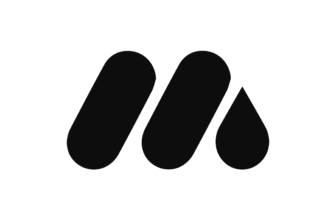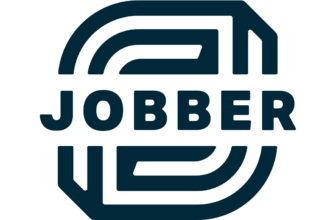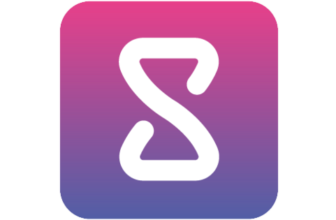Introduction
If you’ve ever wished your software could “talk” to each other without hiring a developer, Zapier may be the solution you’re looking for. This workflow automation platform connects thousands of apps, eliminating repetitive tasks. Instead of manually copying data from one tool to another, you can build simple or sophisticated automationsת, called Zaps, that run in the background. At the same time, you focus on more strategic work.
This comprehensive Zapier review for 2025 is designed to help you determine whether the platform suits your business. You’ll explore how Zapier works, discover its core features (including the latest AI capabilities), examine current pricing tiers, and understand its pros and cons. Whether you’re a solo entrepreneur exploring your first automation or part of a team looking to orchestrate complex workflows, you’ll find actionable insights below.
Software Specification
Zapier’s Core Features
How Zapier Works
Zapier operates on a simple yet powerful principle: when an event happens in one app, it automatically performs one or more actions in another app. These automations are built using triggers and actions, and each successful action consumes a task from your monthly allocation.
- Triggers and actions: A trigger is the event that starts your automation, such as “new email received” or “form submission.” An action is what happens next, like “create a new row in a spreadsheet” or “send a message in Slack.”
- Tasks: Every time an action runs successfully, it counts as one task. Multi‑step workflows with three actions will consume three tasks each time they execute. Understanding tasks is critical because your pricing tier depends on how many tasks you use each month.
- Zaps: A Zap is the automated workflow itself. Zaps can be as simple as one trigger and one action or can contain multiple actions, branches, filters, and delays.
- Limits on free plan: The free tier supports only two‑step Zaps (one trigger and one action), with a monthly limit of 100 tasks and 15‑minute update intervals. To unlock multi‑step workflows and premium app integrations, you’ll need a paid plan.
Key Features of Zapier
Zapier’s appeal lies in its wide range of features that make automation accessible to everyone, from non‑technical professionals to seasoned developers. Here are the highlights:
Multistep Zaps and Conditional Logic
Paid plans enable you to chain multiple actions within a single Zap. You can add filters to run actions only when certain criteria are met or use paths for if/then logic. For example, you might set up a workflow that sends a sales lead to your CRM if the value exceeds a threshold, otherwise assigning it to a nurture sequence. Conditional logic ensures your automations adapt to real‑world scenarios.
Extensive App Integrations (7,000+)
One of Zapier’s strongest selling points is its expansive integration library, more than 7,000 apps spanning CRM, marketing, productivity, finance, project management, and AI tools. Whether you need to connect Gmail with Slack, transfer data from Airtable to Notion, or synchronize e‑commerce orders with your accounting software, chances are Zapier has you covered.
No‑Code Workflow Builder and Templates
Zapier’s drag‑and‑drop interface lets you build automations without writing code. A wide library of pre‑built templates accelerates setup, guiding you through common workflows such as capturing leads, posting on social media, or sending follow‑up emails. You can customize these templates to suit your needs, making them ideal for beginners.
AI Features: Copilot, Agents, Canvas, and AI Actions
To stay ahead in an AI‑driven era, Zapier introduced several intelligent features:
- Copilot: A natural‑language builder that helps you create automations simply by describing what you want to achieve. Copilot interprets your intent, creates a draft Zap, and asks clarifying questions where necessary.
- Zapier Agents: Think of Agents as autonomous AI teammates. You provide a goal (e.g., “every morning summarize new leads and send them to Slack”), grant access to data sources, and set a schedule. Agents can reason, perform web searches, and decide the best course of action to complete your goal, while you retain oversight.
- Zapier Canvas: This visual tool allows you to design and document complex AI systems. You can map data flows, integrate AI models, and see how your automations interact across the organization. Canvas is useful for planning and communicating sophisticated workflows.
- AI Actions and Advanced Steps: You can integrate AI models (such as OpenAI) directly into your Zaps for tasks like summarizing text, generating responses, or categorizing data. Advanced steps include loops, delays, and custom code, giving you flexibility when standard actions aren’t enough.
Webhooks, Scheduling and Real‑Time Processing
For applications without native integrations, webhooks provide a way to send and receive data. Zapier can also schedule automations to run at specific intervals, daily, weekly, or custom times, ensuring your workflows operate when needed. Paid plans offer faster update times (two minutes on the Professional plan and one minute on higher tiers) to keep your processes responsive.
Collaboration Tools and Team Sharing
Team and Enterprise plans introduce features like shared workspaces, shared app connections, and user permissions, allowing multiple people to manage automations securely. You can share Zaps with colleagues, assign roles, and collaborate without exposing sensitive credentials.
Coding Flexibility
While Zapier is primarily a no‑code platform, it supports JavaScript and Python code steps. This flexibility lets developers manipulate data, call external APIs, or perform custom operations within an otherwise no‑code workflow, ideal when you need more control without building an integration from scratch.
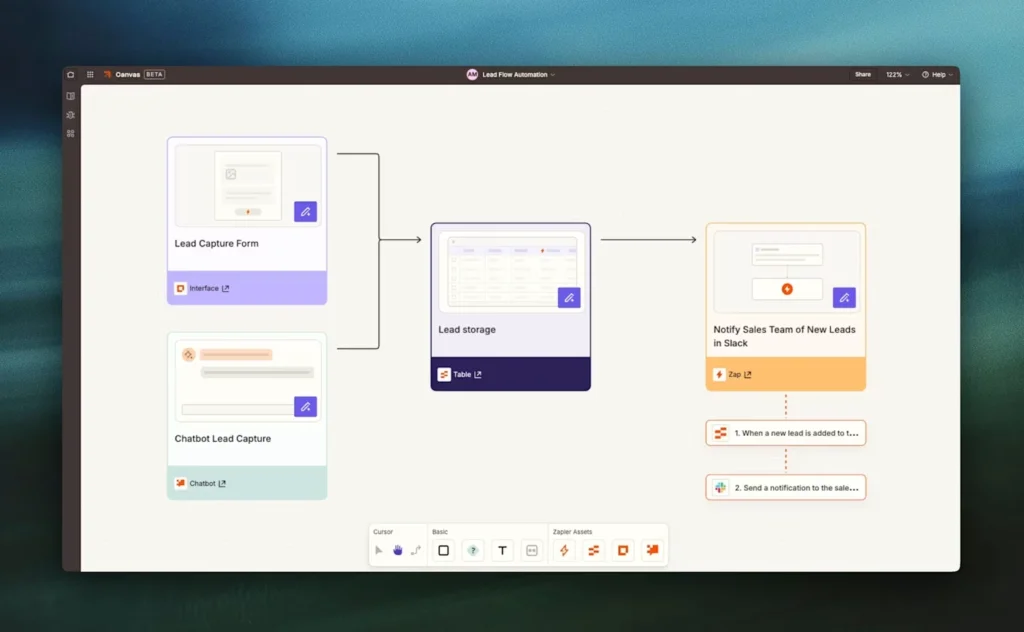
Pros and Cons
Advantages and Disadvantages
Positive
✅ Ease of use
✅ Extensive integrations
✅ Scalability
✅ Reliable performance
Negative
❌ Pricing escalation
❌ Free plan limitations
❌ Integration variability
❌ Complexity for advanced workflows
Every tool has strengths and weaknesses. Evaluating both sides helps you understand where Zapier shines and where it might fall short.
✅ Pros
- Ease of use: Zapier’s intuitive drag‑and‑drop builder and extensive template library let you create workflows quickly without coding. You can test ideas, iterate, and deploy automations in minutes.
- Extensive integrations: With more than 7,000 supported apps, including popular AI and business tools, Zapier provides unmatched connectivity. You’re unlikely to find a platform with a larger or more diverse integration catalog.
- Scalability: Zapier grows with you. Start with simple two‑step Zaps on the free plan and evolve into complex, multi‑step workflows with branching logic, loops, and AI components as your needs expand.
- Reliable performance: Users praise Zapier’s uptime and stability. Once a Zap is configured correctly, it runs consistently in the background, reducing manual errors and freeing up time for higher‑value work.
- AI‑powered capabilities: Copilot, Agents, Canvas, and AI actions allow you to incorporate machine learning into your automations without being an expert in AI. This brings intelligent decision‑making into everyday workflows.
- Active community and resources: A vibrant user community, detailed documentation, and customer support mean you can find answers and inspiration quickly. Higher‑tier plans include live chat and dedicated account managers for personalized guidance.
❌ Cons
- Pricing escalation: Because pricing is task‑based, costs can rise quickly as workflows become more complex or run frequently. Teams processing hundreds of tasks per day may outgrow the Professional plan and face steep monthly bills.
- Free plan limitations: The free tier allows only 100 tasks per month and two‑step Zaps with 15‑minute update intervals. For anything beyond basic experimentation, you’ll likely need a paid plan.
- Integration variability: While Zapier supports thousands of apps, not every integration offers the same depth. Some applications expose only basic triggers or actions, requiring workarounds or custom webhooks to achieve desired functionality.
- Complexity for advanced workflows: Multi‑step Zaps with conditional logic can become tedious to configure, especially when referencing fields across steps. The interface can feel cluttered when managing dozens of Zaps, and there’s limited organization beyond folders.
- Billing and support complaints: Some users report issues with billing transparency and difficulty canceling plans. While support resources are robust, live chat is limited to higher tiers, and phone support is not universally available.
- Update delays on free plan: The 15‑minute polling interval on the free plan can be problematic for time‑sensitive automations, leading to delays in notifications or data synchronization.
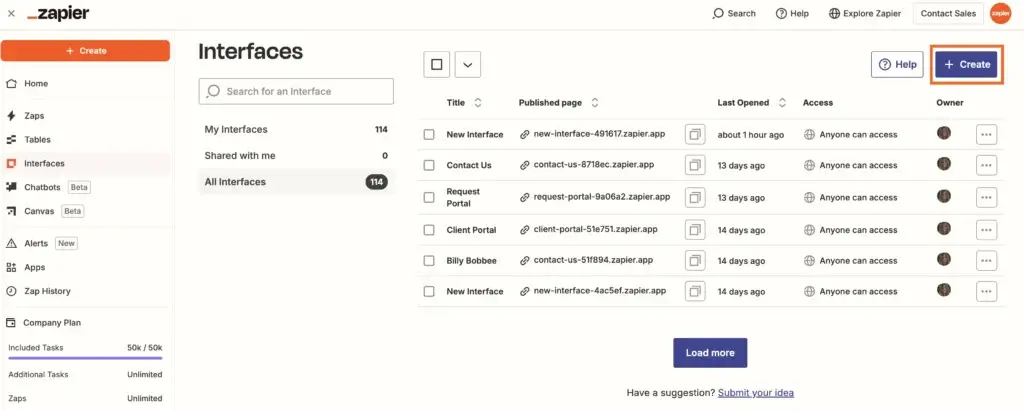
Pricing
How Much Does Zapier Cost?
Zapier uses a tiered subscription model based on the number of tasks you run each month and the features you need. Each plan includes unlimited Zaps, but task limits and update times vary.
| Plan | Price (from) | Tasks/month | Key Features |
| Free | $0 | 100 | Two‑step Zaps, access to basic apps, 15‑minute updates, AI power‑ups |
| Professional | $19.99/month (annual) | 750 | Multi‑step Zaps, filters/paths, premium apps, webhooks, email and live chat support, update time ~2 minutes |
| Team | $69/month (annual) | 2,000 | Unlimited users, shared workspaces and app connections, advanced permissions, one‑minute updates, priority support |
| Enterprise | Custom pricing | 100,000+ | Advanced admin controls, annual task limits, SAML SSO, governance tools, designated technical support |
Task overages: If you exceed your monthly task limit, Zapier charges a pay‑per‑task fee (typically 1.25× the base rate). Monitoring usage and consolidating workflows helps prevent surprise costs. Note that the Free plan’s 100‑task allowance is suitable for experimenting but not for production workloads.
Update times: The Free plan checks for new data every 15 minutes, which may delay time‑sensitive workflows. Professional and higher tiers reduce the interval to two minutes or less, making automations more responsive.
Common Use Cases
What is Zapier Good for?
Zapier’s versatility means it can be used across many industries and departments. Here are some scenarios where it shines:
Marketing Automation
Automate lead capture and nurture sequences by connecting form submissions to your CRM, sending follow‑up emails, adding prospects to ad audiences, and notifying sales representatives. You can even score leads using AI and segment them automatically.
IT Service Management and Support Desk Automation
Streamline support processes by routing tickets from help desk platforms to the appropriate teams, updating multiple systems simultaneously, and sending status notifications through Slack or Microsoft Teams. Automate routine maintenance tasks such as user provisioning or password resets.
HR Onboarding and Operations
Reduce manual work in HR by automating onboarding tasks, adding new hires to payroll and directory systems, sending welcome emails, assigning training modules, and scheduling introduction meetings. Zapier’s ability to sync data across tools simplifies compliance and record‑keeping.
E‑Commerce and Customer Support
Integrate online storefronts with inventory management and accounting systems. When an order is placed, automatically update stock levels, generate invoices, notify warehouse teams, and send personalized receipts. Use AI actions to triage customer inquiries and direct them to the right channel.
Project Management and Productivity
Connect project management apps like Trello, Asana or Monday with communication tools. Create tasks automatically when new emails arrive, post updates to chat channels, and ensure everyone stays informed without switching between platforms. For creative teams, integrate design tools, file storage, and feedback systems.
Cross‑Platform Data Synchronization
Keep data consistent across CRMs, spreadsheets, databases, and analytics platforms. Zapier can update records in multiple systems simultaneously, reducing duplicate entries and ensuring your teams work with accurate information.
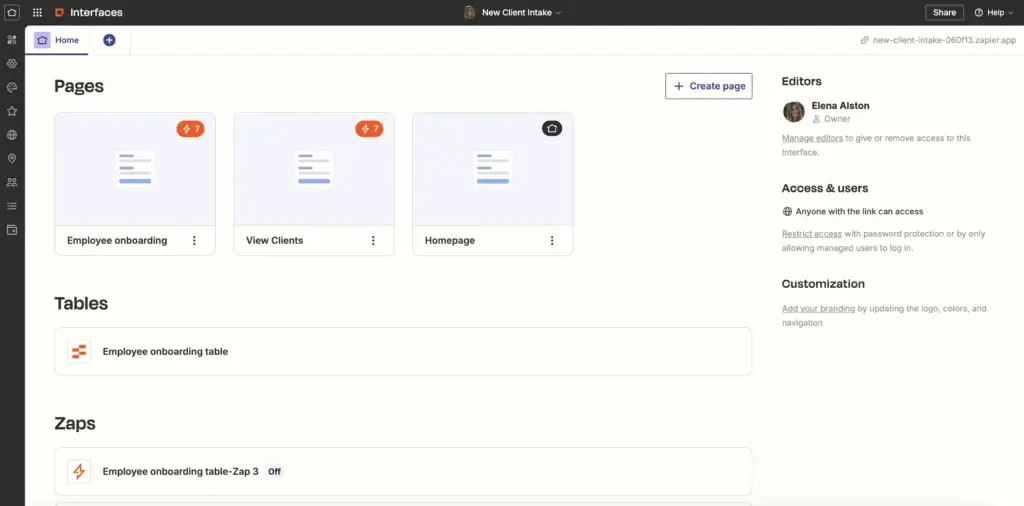
UX and Support
Ease of Use and Support Options
Zapier’s learning curve is gentle, thanks to clear onboarding guides, video tutorials, and a robust help center covering all aspects of the platform. A built‑in virtual assistant can answer questions and direct you to relevant resources. For community‑driven support, the Zapier Community forum connects you with other users who share workflows and troubleshooting tips.
Support channels vary by plan:
- Free Plan: Access to help center articles and community forums.
- Professional Plan: Email support with priority handling for plans exceeding 2,000 tasks per month, plus live chat for high‑volume customers.
- Team Plan: Live chat support during business hours, faster response times, and shared workspace guidance.
- Enterprise Plan: Dedicated technical account managers, governance training, and access to in‑depth security documentation.
Tips for Maximizing Value
- Estimate task usage: Before selecting a plan, analyze how many tasks your automations will consume. Remember that each action counts as one task, so multi‑step Zaps with frequent triggers add up quickly.
- Use filters and paths: Prevent unnecessary task consumption by adding filters and conditional paths to your Zaps. This ensures that actions run only when certain conditions are met.
- Consolidate workflows: Instead of creating multiple single‑step Zaps, combine related actions into a single multi‑step workflow. This reduces duplication and helps you stay within task limits.
- Monitor task consumption: Zapier’s dashboard provides usage insights. Review your task usage regularly to catch spikes early and upgrade your plan before hitting limits or incurring overage fees.
- Leverage AI features wisely: Use Copilot to speed up setup, but review the generated Zaps carefully to ensure fields map correctly. For complex workflows, test AI components like Agents and Canvas on a small scale before deploying widely.
- Organize your Zaps: Create folders and use naming conventions to keep your automations tidy. Consider splitting production Zaps from experimental ones to avoid confusion.
Compare with Others
Alternatives to Zapier
Although Zapier is a market leader, it’s not the only automation platform available. Here’s how it compares to notable alternatives:
- Make (formerly Integromat): Known for its visual workflow editor and advanced logic. Make offers granular control over data processing, but requires more technical expertise. Pricing can be more affordable for high‑volume users, especially those comfortable with complex operations.
- Microsoft Power Automate: Integrated tightly with Microsoft 365 and Azure ecosystems. It provides robotic process automation (RPA) features and on‑premises options. Ideal for organizations already invested in Microsoft infrastructure.
- n8n: An open‑source automation tool that can be self‑hosted. It allows custom coding and privacy control. Suitable for developer‑led teams wanting full flexibility without per‑task costs, though it requires infrastructure management.
- Workato: Aimed at enterprises, Workato offers robust governance, deep integrations, and workflow intelligence. Pricing reflects its enterprise focus and may be overkill for smaller teams.
- Integrately and Activepieces: These platforms emphasize quick deployment and include millions of pre‑built automations. Integrately simplifies setup for marketing teams, while Activepieces offers open‑source licensing for those seeking a self‑hosted solution.
When choosing an alternative, consider factors like integration depth, pricing structure, task volume, security requirements, and your team’s technical expertise. Zapier remains the easiest for non‑technical users, but alternatives may offer better value for specific use cases.
Security and Compliance
What about security?
AI
Latest AI Innovations
Zapier’s innovation efforts have accelerated over the past year. At the ZapConnect 2025 conference held in September, Zapier announced Copilot, an AI assistant that helps you describe automations in plain language and builds them automatically. The platform also introduced enterprise‑grade governance tools and added over 30 new AI integrations, bringing the total to more than 450 AI‑focused apps.
These additions follow the launch of Zapier Agents and Zapier Canvas earlier in the year. Agents can reason and perform tasks autonomously, while Canvas offers a bird’s‑eye view of complex AI systems. Together, these tools signal Zapier’s evolution from a simple integration service to a comprehensive AI orchestration platform. For businesses aiming to democratize AI across departments, Zapier now serves as a central hub that connects data sources, AI models, and human approval processes.
Conclusion
Final Thoughts
Zapier has transformed from a simple automation connector into an AI‑powered orchestration platform. Its intuitive interface, vast integration library, and evolving AI toolkit make it accessible to anyone seeking to automate repetitive work or build intelligent workflows. For small businesses and solo entrepreneurs, the free and Professional plans offer enough power to streamline daily tasks. Teams and enterprises benefit from shared workspaces, governance controls, and advanced security features.
However, Zapier’s task‑based pricing can become expensive as you scale, and not every integration is equally deep. The platform suits organizations that prioritize ease of use and broad app coverage over advanced customization. If you need complete control or handle very complex logic, consider alternatives like Make or open‑source tools. For most users looking to bridge apps quickly and bring AI into their workflows, Zapier remains a top choice in 2025.
Have more questions?
Frequently Asked Questions
1. What is a task in Zapier?
A task is counted each time an action in your Zap completes successfully. If a Zap has three actions, it uses three tasks whenever it runs. Your monthly task allotment depends on your plan.
2. Is Zapier free to use?
Yes. The free plan offers unlimited Zaps but limits you to 100 tasks per month and two‑step workflows with 15‑minute update intervals. It’s suitable for testing or very simple automations.
3. How does Zapier’s pricing scale?
Pricing is based on the number of tasks you run each month. The Professional plan starts at $19.99/month (billed annually) with 750 tasks. Higher tiers increase task limits, offer faster update times, and introduce collaboration features.
4. Can I use AI in my Zaps?
Absolutely. Zapier offers AI Actions, Copilot, Agents, and Canvas. These tools enable natural‑language automation creation, autonomous agents that execute goals, and visual mapping of AI workflows.
5. Does Zapier store my data?
Zapier temporarily stores data only long enough to execute your automations. The platform is SOC 2 and SOC 3 certified, employs encryption, and offers two‑factor authentication and SAML SSO for enhanced security.
6. Are premium apps included in the free plan?
No. Premium apps (such as Salesforce or Shopify) require a paid plan. To access them, you’ll need the Professional plan or higher.
7. How do I avoid hitting task limits?
Consolidate multiple actions into a single Zap, use filters to run actions only when necessary, and monitor usage via your dashboard. Upgrading to a plan with a higher task allowance may also be necessary if usage grows.
8. What happens if an integration breaks?
When third‑party apps change their APIs, Zapier alerts you via email and provides logs to identify issues. Most integration problems are resolved quickly, but having backup processes for critical workflows is recommended.
9. Can Zapier handle complex conditional logic?
Yes. Paid plans enable filters and paths for if/then logic, and Canvas helps visualize complex workflows. For extremely advanced use cases, some users prefer developer‑focused tools like n8n or Workato.
10. Is Zapier the best automation tool?
It depends on your needs. Zapier excels at ease of use, breadth of integrations, and AI features. If you need deep customization, offline or on‑premises deployments, or lower per‑task costs at scale, you might evaluate alternatives like Make, n8n, or Microsoft Power Automate.


